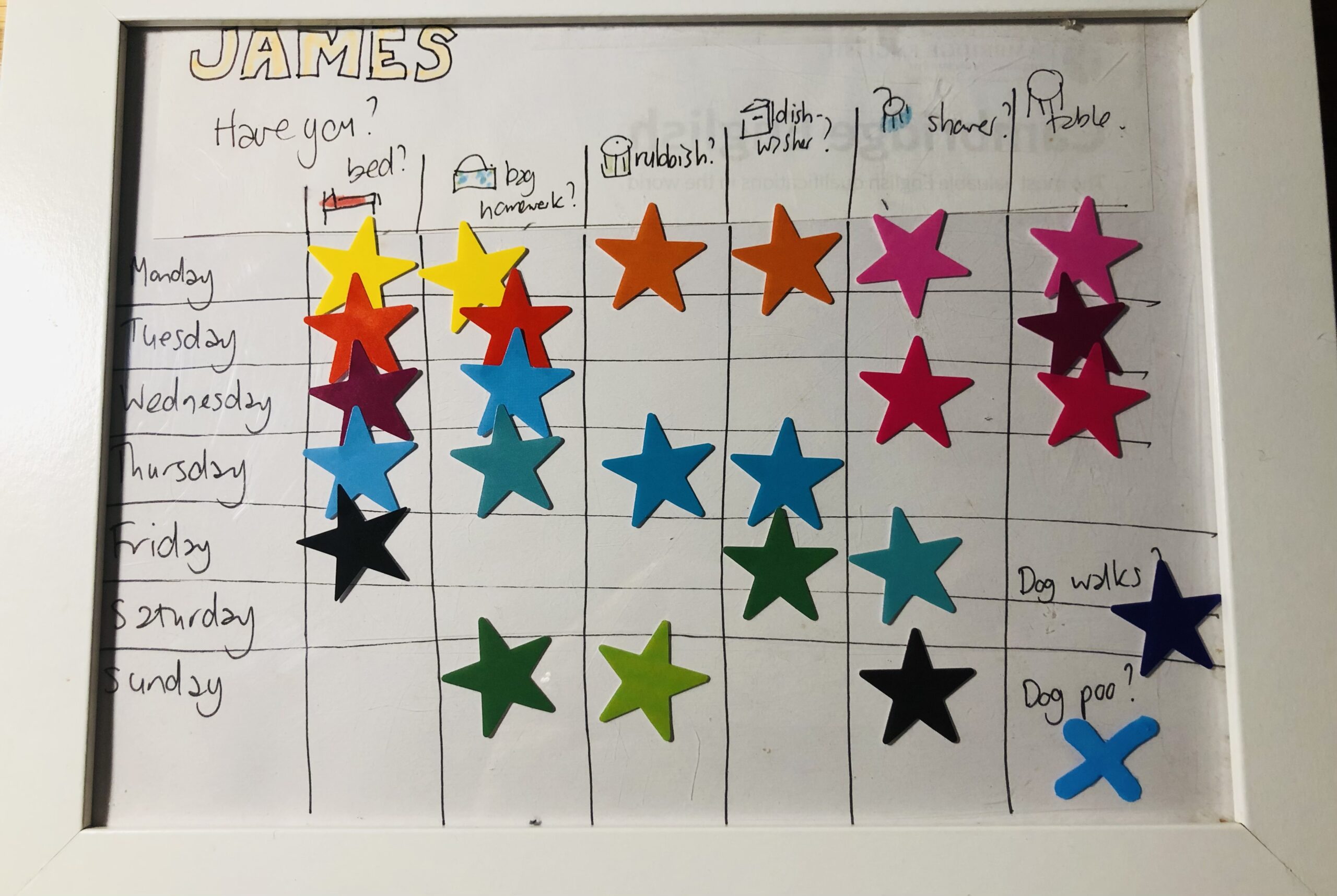I recently cleaned out my pantry and found a chart I used with my children when they were young. We would add stars to the chart for their tasks, and they were rewarded with kisses and pocket money. It worked well for a while until I noticed stars appearing on days that had not started and tasks that had not been done.
This got me thinking about behaviour charts in the YL ELT classroom. For many years I have used them in my classes. In some cases, they have been highly successful, and others were not as successful as planned.
Here are some tips that may help if you plan to chart or not…
1 Focus on positive behaviour. You want your class to work towards this. For this reason, avoid any negative behaviours and reward the good things your learners do, for example, stars or points for speaking English, rather than removing them for speaking their first language.
2 Keep your chart simple. Prioritise the most important things you want from your learners and add them to your chart. Being kind to others may take priority over tidy handwriting (something not all learners can do). Work out what your class needs and chart accordingly.
3 Be consistent and fair. All learners are different and have good and bad days. Tune in to how they are feeling and award accordingly. If you notice a lack of engagement, you may want to be slightly generous to get learners back on board..don’t exaggerate but use your good judgement —points for being ready to learn or helping others are never bad.
4 Balance the points you award. No one enjoys being on the losing side. Try to distribute points evenly amongst groups. This will keep motivation levels in the class consistent and motivate them to participate.
5 Don’t be disappointed if learners don’t respond. In life, some things work for a group of learners, and others don’t. If you notice a lack of engagement, don’t be disheartened. There are other ways (follow me for further suggestions).
My boys are now 12 and 17, and we don’t chart their home chores. When I think back, the chart helped establish family ground rules and let them know what we expected from them. They now automatically do their tasks (bed, dishwasher..we’re still working on the dog poo) and will regularly snitch on each other when they haven’t. I have also seen similar automated behaviours in classes I have taught for several years.
So, to answer the question: chart if it is well received, but be selective in the criteria you use and how you award points.
If you found this post helpful, you may wish to join my Facebook group https://www.facebook.com/groups/eltconfidentyounglearnersteaching and continue the conversation.
If you are a newly qualified ELT teacher or transitioning into teaching young learners, my short course ELT: Confident Young Learners Teaching essentials is starting in September. I am currently waitlisting candidates and will open the doors in September. Sign up now to avoid missing a place. https://youtube.com/shorts/lhgISckedBw https://www.teachyounglearners.com/my-courses/
Thank you for reading, and see you soon!
